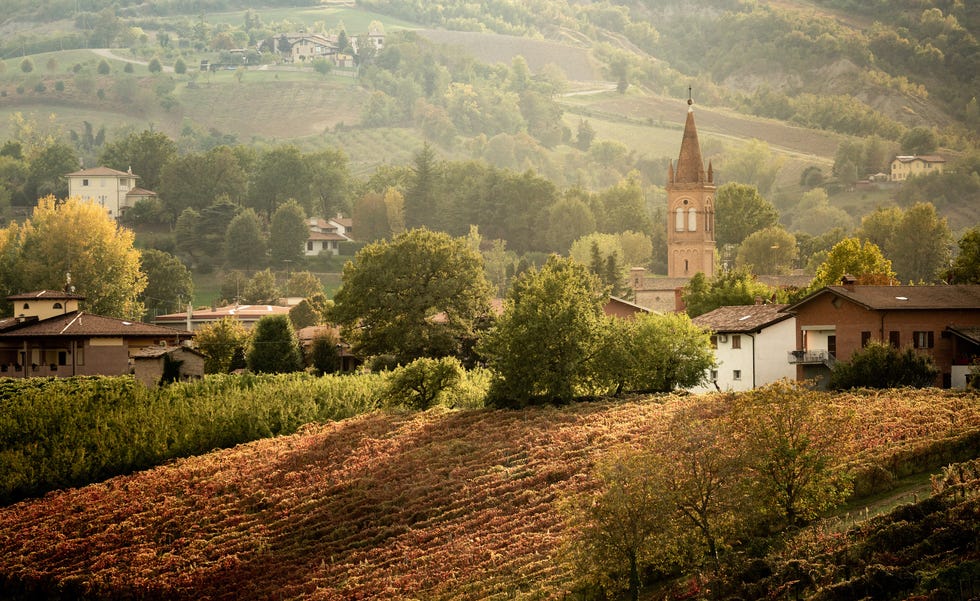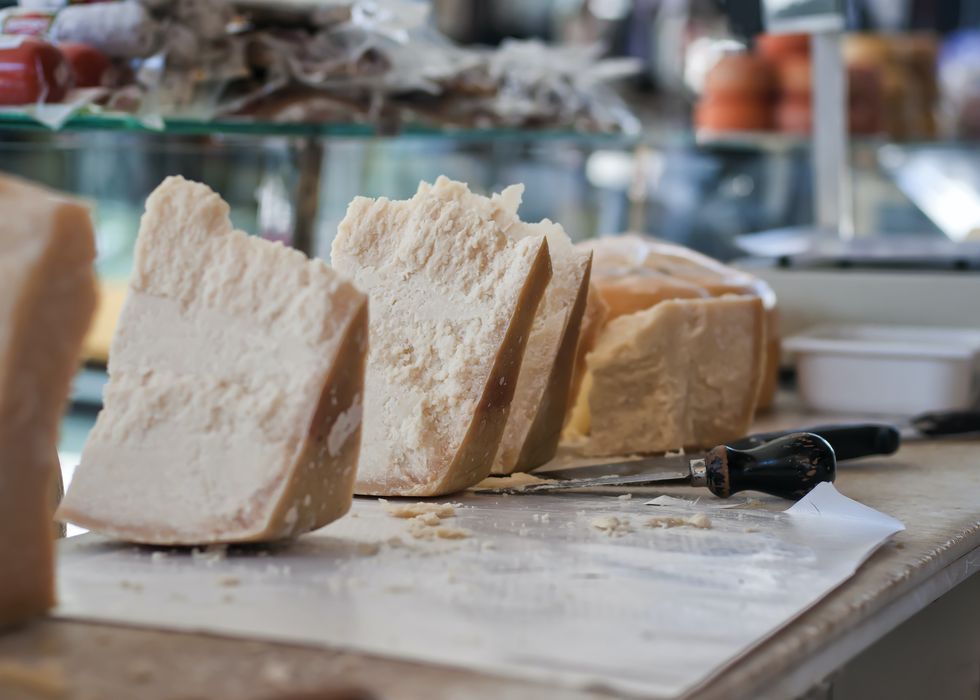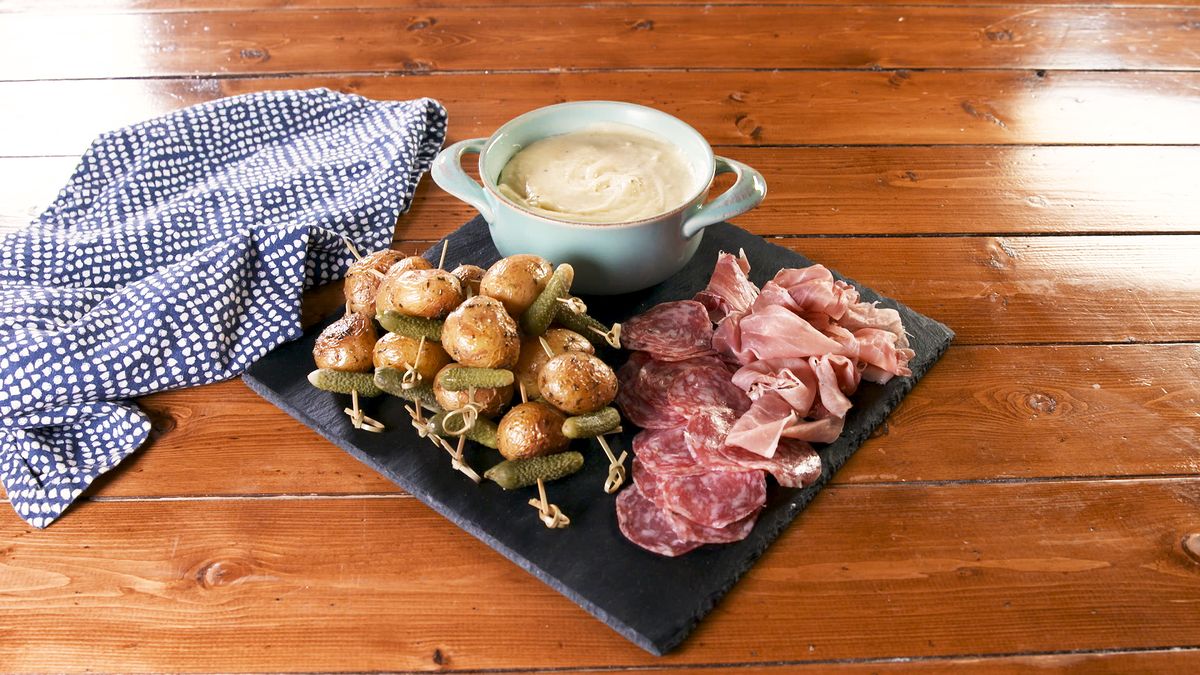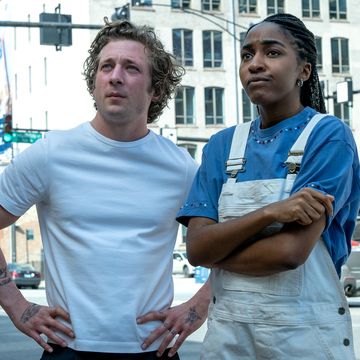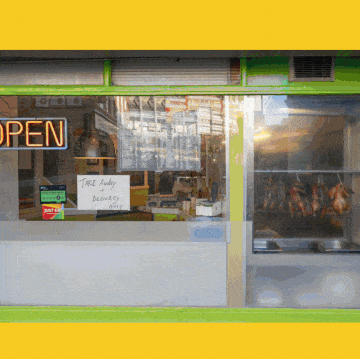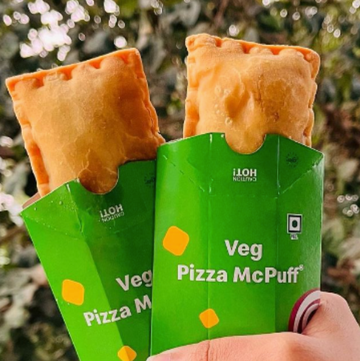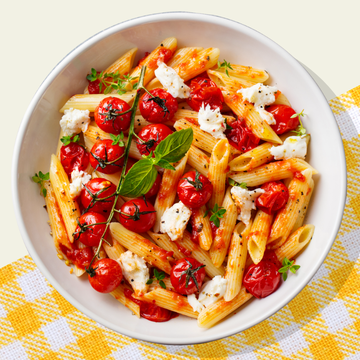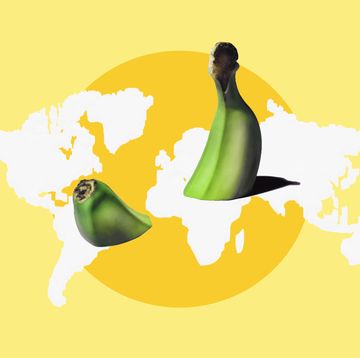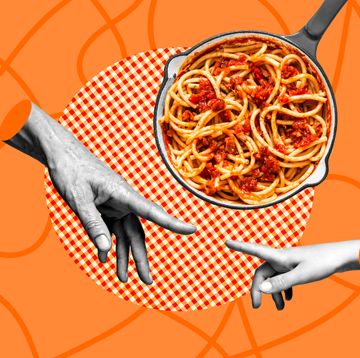Often belittled to something just for grating over pasta, Parmigiano Reggiano is probably the most important cheese in the game.
This hard, crumbly cheese might be known for its strong umami flavour, but as an ingredient, its talents are endless: shave it over raw and cooked dishes, grate it into both creamy or meat-based sauces, incorporate it into pastry, bread or pasta dough, or even desserts and ice cream for nuttiness and depth (trust us, it's *good*).
Even Parmigiano Reggiano on its own is versatile. Depending on its age, the flavour and texture of the cheese changes entirely: from the elastic, smooth and nutty young cheese at 12 months of maturation, to the increasingly deep, crumbly, and crystallised cheeses of 24 months, 36 months, 92 months and beyond.
Italians take Parmigiano Reggiano a bit more seriously than us Brits – and for good reason.
From its humble monastery beginnings, Parmigiano Reggiano is now so valuable, some Italian banks accept wheels of it as collateral for loans. And while that monetary value derives in part from its rich history, it’s mostly a result of the strict rules involved in the making process.
Why did they start making Parmigiano Reggiano and when?
The earliest record of Parmigiano Reggiano comes from 1254. Monks living in the Emilia Romagna region of Italy were looking for new ways to extend the shelf-life of the milk they were getting from their cows. They started playing with simple cheesemaking procedures involving just milk, whey, rennet and salt, and Parmigiano Reggiano was born.
It quickly became a favourite amongst the monastery’s residents; not only for the flavour, but because the cheese is made with half semi-skimmed milk. That meant that not ALL the milk from every milking needed to go into making the cheese: they could also produce butter from the same milk beforehand, and the leftover whey could be used to make ricotta, too.
Three delicious dairy products from one milking? You can see why it was a favourite from the get-go.
How is Parmigiano Reggiano made?
Despite its high value, long history and huge name, the actual process of making Parmigiano Reggiano is very simple, comprised of only four all-natural ingredients, and has not changed in almost 800 years.
The milk, whey and rennet are warmed together in copper vats until curds form. Once the curds are cooked, they sink to the bottom of the vat, where the whey weighs on the top and compacts them down. This is then lifted, cut in half, and split into two separate muslins which later become two 35kg wheels.
Each bundle of curd drains for 48 hours, after which the wheels are submerged in a salt solution for 18 to 21 days. The cheese then goes into dry storage to age and mature for a minimum of 12 months. After one year, only if the cheese passes all quality control checks, can each wheel be branded with the Parmigiano Reggiano logo and called such.
That’s it. That’s the whole process. Sounds simple, right?
In essence, it is; except each of these steps has to be carried out the same way the monks would have carried it out: carefully, delicately, by hand. This is one of the most widely known, widely eaten cheeses in the world and every single wheel, at every single stage of being made, is made by hand. Not a mass-producing factory machine in sight.
What makes Parmigiano Reggiano so special?
Parmigiano Reggiano’s value doesn’t come from expensive ingredients or a luxurious making process. Parmigiano Reggiano’s value comes from where, and how, it must be made.
This isn’t just your average Cheddar or Brie (although we love those too, obvs). We’re talking about an ancient craft, refined hundreds of years ago and barely changed by time, that’s as tied to the land it comes from as the fine wines of France or South Africa.
You might also know it as terroir (or, in Italian, terrorio): the precious balance of a multitude of environmental factors which are carefully curated to make the final product so damn delicious. Farming practices, the nutrients in the local soil, local weather. Everything plays a vital role. It’s the same reason why some wine buffs get so excited about getting to sip certain vintages.
Every aspect of the terrorio is important when it comes to building Parmigiano Reggiano’s nutty, umami-rich depth and melt-in-the-mouth, crystallised texture. This isn’t achieved through any accident. This is the careful encouraging and managing of three very specific, very special strains of pre-lactic bacteria that only grow in these very, very specific conditions in this one very precise location.
This is the reason why Parmigiano Reggiano is a PDO (protected designation of origin) product. If you were to set up a dairy in the UK using the same farming practices, the same cheesemaking process, even the same cows, it won’t be Parmigiano Reggiano. It won’t even taste like Parmigiano Reggiano. The iconic flavour and structure can only be created through grazing your cows in Emilia Romagna.
Why does Parmigiano Reggiano have to come from Emilia Romagna?
Parmigiano Reggiano is far from Emilia Romagna’s only iconic export: Modena’s balsamic vinegar, also PDO protected, is the original balsamic vinegar AND officially the best in the world, coming from 100% grapes. Oh, and ever heard of Parma ham? Yep. You guessed it.
Thousands of years ago, what’s now known as Emilia Romagna was once underwater. As a result, the soil has a high salt content, as well as nutrients and strains of bacteria which have lived in the soil since its underwater days, making the food grown and produced there some of the best in the world.
Amongst the PDO rules that restrict what can and cannot be labelled Parmigiano Reggiano, you’ll find many specifications on the cows, their milk, and their vicinity to the dairies in which the cheese is made. The cows must live and graze less than half an hour from the dairy, and the milk absolutely MUST arrive at the dairy less than two hours after milking to make sure the levels of these bacteria populations is right for the cheesemaking process.
What to look for when buying and tasting Parmigiano Reggiano?
So, Parmigiano Reggiano is worth nerding out over. What’s next?
As we know, Parmigiano Reggiano relies on its terrorio for its flavour, and so different dairies making Parmigiano Reggiano from different cows at different times of year will all have distinct flavour profiles and their own tasting notes. That, plus the fact that Parmigiano Reggiano develops different flavours and textures as it ages, means that you can get some serious variety from the “same cheese”.
So, how do you know what to look for to suit your own personal preferences? A good (and fun) place to start is by trying a few different Parmigiano Reggianos that have been aged for different lengths of time.
Parmigiano which has been aged for just 12 months is nutty, mild and needs some light chewing (almost like an Edam), whereas a 24-month-old Parmigiano Reggiano is crumblier and crunchier with lactic crystals, and has a richer, more advanced flavour. Head into 36-month and 48-month territory and you’re going to get a cheese that literally melts on the tongue with some serious earthy, fruity depth.
Parmigiano Reggiano has such a variety of flavours and layers within each cheese, that you’re more likely to be able to pinpoint them when trying different Parms next to one another. Throw a little Parmigiano Reggiano party for your friends with three or four different Parms, a bottle of wine, and share your newfound nerdy Parmigiano Reggiano knowledge and enjoy.
An excuse for a cheese and wine night? Don't mind if we do.
As Good Housekeeping's Social Media Manager, Bobbie Edsor is in charge of all the content you'll find across the magazine's social media channels. As well as being in the know with all things social media and video, Bobbie is a keen grower and gardener, forager, and baker. Her latest self-set challenge was to bake a batch of croissants from scratch.



